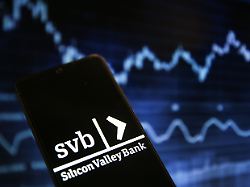Impact and Risks
Can a domino effect be prevented after the SVB bankruptcy?
03/13/2023 6:37 p.m
The collapse of the Silicon Valley Bank in the USA caused unrest around the world. After all, this is the biggest bank collapse since the financial crisis of 2008. It brings back bad memories. However, most experts currently consider the risk of infection to be low.
The bankruptcy of the Silicon Valley Bank (SVB) in the USA caused an international stir and fueled fears of a domino effect. Even memories of the global financial crisis of 2008 are awakened. However, most experts currently consider the risk of infection to be low, partly because of the measures taken by the US authorities. There is therefore no threat of a repeat of the 2008 crisis.
“The group of vulnerable companies that could potentially be affected is probably small,” write analysts at German asset manager DWS. “Banks, in turn, are in a much more stable position financially than they were before the financial crisis (of 2008).”
“We are not in the same situation” as in 2008, agrees Eric Dor from the French business school IESEG. “It’s much more limited, with a certain type of bank and a clientele in a certain sector.”
The SVB was closed on Friday. The bank, which is primarily active in the technology sector, had previously fallen into dramatic difficulties as a result of the deteriorating economic environment for the industry, a rush of customers to their custody accounts and billions in losses from the sale of securities. The insured customer deposits were initially transferred to the US Federal Deposit Insurance Fund (FDIC).
On Sunday, the US Treasury, the Federal Reserve and the FDIC said they would protect all customer funds with the SVB. In addition, other financial institutions that could get into trouble have been promised support: they should be given access to finance if necessary to be able to meet their customers’ needs. In a further step, the New York Signature Bank, which had also got into difficulties, was closed.
The government and authorities want to calm the situation
“The Fed’s guarantees are important, which opens a window for additional liquidity,” says analyst Alexandre Baradez of financial firm IG France. Financial expert Dor says: “Normally, the situation should calm down with the measures decided in the USA.” However, other banks suffered massive price losses on the stock exchanges. And City Index analyst Fiona Cincotta is critical of the development. “Rather than calm nerves, fears of contagion have continued to mount and investors in Europe are dumping risky assets.” The focus is particularly on Spanish and Italian banks, which investors see as the weakest link in the chain.
Meanwhile, governments and authorities on both sides of the Atlantic are continuing to try to calm the situation. US President Joe Biden said in a televised address that citizens could “have confidence that the banking system is safe”.
In Germany, where SVB has a branch, the Federal Financial Supervisory Authority (Bafin) said that SVB’s insolvency and the associated “emergency” of the German subsidiary “did not pose a threat to financial stability”. France’s Economy and Finance Minister Bruno Le Maire also said that he saw “no risk of infection, there is no special warning”.
